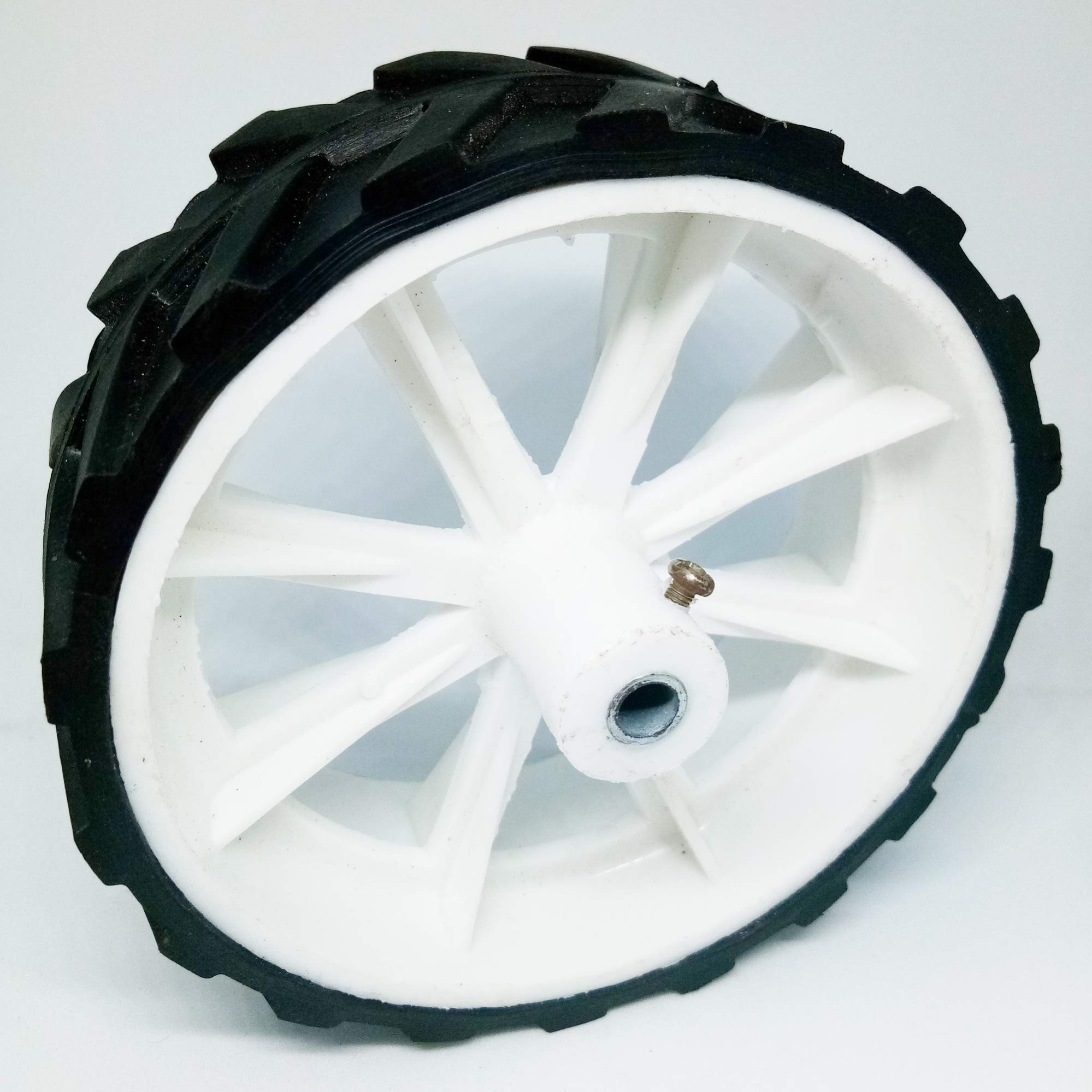








10 X 2 ROBOT WHEEL
Robotic Wheel for high load, 11cm x 4cm, Wheel for robot,For Engineering Project. Easy to mount, durable and cheap. These wheels have a 6 mm hole for shaft with screw for fitting making it very easy to mount on motors.
₹ 54 ₹69
69



| Made In : | India |
Add FAQ
An 11 x 4 robot wheel refers to a wheel with an 11-inch diameter and a 4-inch width. This type of wheel is often used in robotics and other mechanical applications due to its size and capability to handle various surfaces. Here’s a detailed guide on the features, applications, and considerations for using an 11 x 4 robot wheel:
Key Features:
-
Diameter: 11 inches (approximately 280 mm) – This determines the size of the wheel.
-
Width: 4 inches (approximately 100 mm) – This affects the wheel's contact with the ground and stability.
-
Material:
- Rubber: Provides good traction and shock absorption.
- Plastic: Lightweight but less traction and shock absorption.
- Foam: Lightweight and good for certain traction needs.
-
Tread Pattern:
- Smooth: Ideal for smooth or indoor surfaces.
- Knobby: Offers better traction on rough or uneven surfaces.
- Custom Patterns: For specific traction or design needs.
-
Mounting Options:
- Hub: Central part of the wheel where it attaches to the motor shaft.
- Adapters: Some wheels include adapters to fit various motor shafts.
Applications in Robotics:
-
Mobile Robots:
- Drive Wheels: Used as primary drive wheels to move robots across different surfaces.
- Stability: The large diameter and width provide better stability and load-bearing capacity.
-
Educational Robots:
- Robotics Kits: Suitable for educational kits that require robust wheels for various tasks.
-
DIY Projects:
- Custom Robots: Ideal for hobbyists and custom-built robots needing larger wheels for better performance.
-
Robotic Vehicles:
- Autonomous Vehicles: Suitable for creating robotic platforms or vehicles that require robust and stable wheels.
Selecting the Right Wheel:
-
Material:
- Choose Based on Surface: Rubber wheels are better for rough or uneven surfaces, while plastic wheels are suitable for smooth surfaces.
-
Tread Pattern:
- Consider Terrain: Choose the tread pattern based on the operational environment (e.g., knobby for rough terrain).
-
Mounting Compatibility:
- Motor Shaft Size: Ensure the wheel’s hub or mounting system fits the motor shaft or axle used in your project.
Installation:
-
Attach the Wheel:
- Align: Position the wheel on the motor shaft or mounting system.
- Secure: Use screws, bolts, or other fastening methods to attach the wheel.
-
Check Alignment:
- Ensure Proper Fit: Make sure the wheel is aligned correctly and spins smoothly without wobbling.
-
Power and Control:
- Connect Motor: Ensure the motor is properly connected to a power source and controller to drive the wheel.
Example Setup:
-
Drive System:
- Mount the Wheel: Attach the 11 x 4 wheel to a DC motor or servo using the appropriate mounting hardware.
- Power the Motor: Connect the motor to a power source and controller to drive the wheel.
-
Balancing:
- Check Load Distribution: Ensure that the wheels are evenly spaced and balanced to prevent tipping or uneven wear.
Maintenance Tips:
-
Inspect Regularly:
- Check for Wear: Look for signs of wear or damage on the wheels and tread.
- Tighten Fasteners: Ensure all mounting screws or bolts are secure.
-
Clean the Wheels:
- Remove Debris: Keep wheels clean from dirt and debris to maintain optimal performance.
-
Lubricate Bearings:
- Smooth Operation: If the wheels have bearings, periodically lubricate them to prevent friction and ensure smooth rotation.
Purchasing:
- Retailers: Available from robotics suppliers, electronics stores, online retailers like Amazon, eBay, and specialized robotics component suppliers.
- Specifications: Verify the wheel’s diameter, width, material, and mounting options to match your project requirements.
Example Products:
-
Rubber 11 x 4 Robot Wheel:
- Material: Rubber.
- Tread: Knobby or smooth.
- Mounting: Central hub or adapter for motor shaft.
-
Plastic 11 x 4 Robot Wheel:
- Material: Plastic.
- Tread: Smooth or custom patterns.
- Mounting: Hub compatible with motor shaft.
By choosing the right 11 x 4 robot wheel and installing it correctly, you can enhance the performance and functionality of your robotic project, ensuring smooth and reliable operation across various surfaces.
0 Reviews For this Product





3.jpeg&width=225&quality=80)







